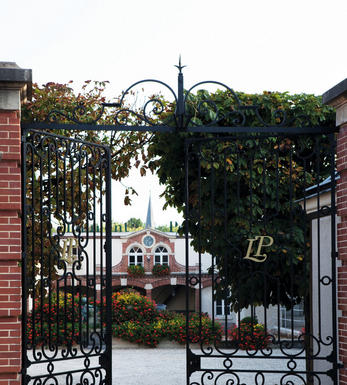
Champagne Laurent-Perrier, Cuvée Rosé, Brut

Critics reviews
William Kelley - 30/04/2019
About this WINE

Laurent Perrier
Laurent Perrier was founded by André-Michel Pierlot in 1812 in the village of Tours-sur-Marne. However, it was the Nonancourt family who made this the famous Champagne House it is today. Bernard de Nonancourt, a veteran of the Second World War, took charge of the firm aged just 28. He is credited with creating Laurent-Perrier’s house style, centred on freshness, finesse and elegance. Today, Lucie Pereyre de Nonancourt is the fourth generation of the family here.
Laurent-Perrier is unique in that its prestige cuvée, Grand Siècle, is a multi-vintage blend rather than a vintage Champagne. Each “iteration”, as they call their new releases, is produced from three vintages, carefully selected by the Cellar Master.
In 2023, Maximilien Bernardeau was appointed Cellar Master, following in the footsteps of the long-serving Michel Fauconnet.

Rosé Champagne
Rosé wines are produced by leaving the juice of red grapes to macerate on their skins for a brief time to extract pigments (natural colourings). However, Rosé Champagne is notable in that it is produced by the addition of a small percentage of red wine – usually Pinot Noir from the village of Bouzy – during blending.
Recommended Producers : Billecart Salmon (Elizabeth Salmon Rose), Ruinart

Champagne blend
Which grapes are included in the blend, and their proportion, is one of the key factors determining the style of most Champagnes. Three grapes are used - Pinot Noir, Chardonnay and Pinot Meunier.
26% of vineyards in Champagne are planted with Chardonnay and it performs best on the Côtes des Blancs and on the chalk slopes south of Epernay. It is relatively simple to grow, although it buds early and thus is susceptible to spring frosts. It produces lighter, fresher wines than those from Burgundy and gives finesse, fruit and elegance to the final blend. It is the sole grape in Blancs de Blancs, which are some of the richest long-lived Champagnes produced.
Pinot Noir accounts for nearly 40% of the plantings in Champagne and lies at the heart of most blends - it gives Champagne its body, structure, strength and grip. It is planted across Champagne and particularly so in the southern Aube district.
The final component is Pinot Meunier and this constitutes nearly 35% of the plantings. Its durability and resistance to spring frosts make the Marne Valley, a notorious frost pocket, its natural home. It ripens well in poor years and produces a soft, fruity style of wine that is ideal for blending with the more assertive flavours of Pinot Noir. Producers allege that Pinot Meunier lacks ageing potential, but this does not deter Krug from including around 15% of it in their final blends.


Buying options
Add to wishlist
Description
Archetypical rose, made from bled grapes, dominated by red fruits and an aestetic ensemble which is close to irresistible.
wine at a glance
Delivery and quality guarantee